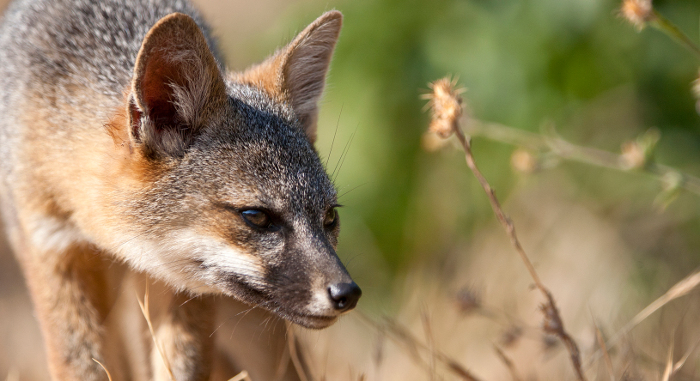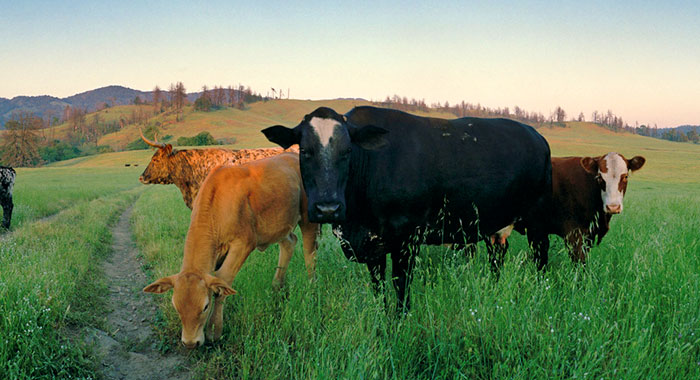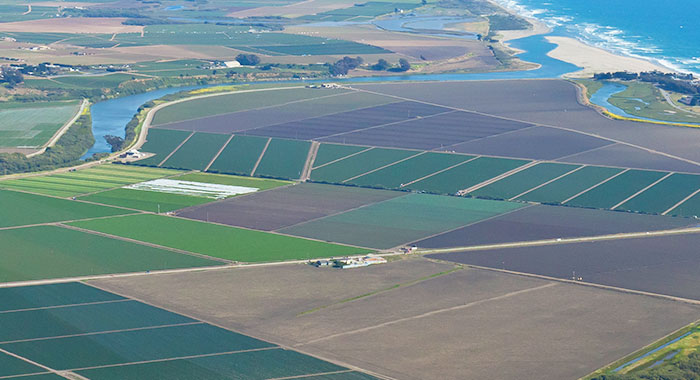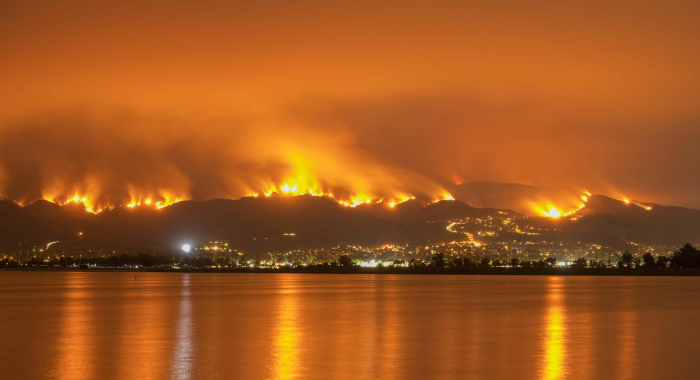In California, a day’s drive can take a visitor from record-setting desert heat to glaciated peaks to temperate rainforests with the world’s tallest trees. This astounding climatic and landscape diversity has helped create a biodiversity hotspot. California is also an economic hotspot – the 6th largest economy in the world – and is home to nearly 40 million people. The demand for land for new development and farms, along with accelerating climate change, puts tremendous stress on ecosystems, and the benefits they provide.
The state’s legacy of conservation has created a network of natural and working lands that benefit people by supplying clean water, capturing carbon, and directly contributing to the state’s economic and cultural vitality through recreation, tourism, and agricultural production. Conservancy scientists work across the spectrum of ecosystem types and human land uses, to advance conservation goals that also contribute to the well-being of people in those places.






Kristen N. Wilson, Patricia N. Manley
Climate change, high-severity wildfire, and drought threaten the resilience of forests and communities in the Sierra Nevada. The Tahoe–Central Sierra Initiative (TCSI) is a partnership of state…Kristen Wilson, Dale W. Johnson, Douglas F. Ryan, ed.
Authored by TNC staff and colleague, Chapter 8 of this report synthesizes environmental monitoring and studies performed at Sagehen Experimental Forest that are relevant to water quality regulatory…Environmental Science Associates (ESA) for The Nature Conservancy and Naval Base Ventura County
Charlotte Stanley, Alyssa Mann, Walter Heady
The United States operates thousands of military installations in the U.S. and worldwide, worth about $1.2 trillion. These facilities are where personnel train and test weaponry, with…Walter Heady, Alyssa Mann, Stacey Solie, Bob Battalio, James Jackson, Kendall Lousen, and Bob Barnes
The U.S. Congress and the Department of Defense (DoD) have determined that climate change is a threat to national security and have required military installations to develop plans to improve the…Alyssa Mann, Walter Heady, Charlotte Stanley
TNC and the United States Navy partnered together to prepare for the impacts of climate change on Naval Base Ventura County (NBVC), Point Mugu in California. NBVC is a critical and strategic asset of…Alyssa Mann, Walter Heady, Charlotte Stanley
Christopher Dillis, Van Butsic, Jennifer Carah, Samuel Zipper, Theodore Grantham
Water management practices for cannabis farming in California are not well understood. This study examined permit reporting data and found that the vast majority (>75%) of permitted cannabis farms…Elizabeth S. Forbes, Peter S. Alagona, Andrea J. Adams, Sarah E. Anderson, Kevin C.Brown, Jolie Colby, Scott D. Cooper, Sean M. Denny, Elizabeth H.T. Hiroyasu, Robert Heilmayr, Bruce E. Kendall, Jennifer A. Martin, Molly Hardesty-Moore, Alexis M. Mychajliw, Brian P. Tyrrell, Zoë S.Welch
Species reintroductions in a changing world are difficult and highly uncertain. This paper introduces a framework to assess habitat suitability using historic, geographic, and taxonomic analogies to…Christopher Dillis, Eric Biber, Hekia Bodwitch, Van Butsic, Jennifer Carah, Phoebe Parker-Shames, Michael Polson, and Theodore Grantham
This study used permitting and GIS data to explore geographic characteristics of legal cannabis farms in California. The study found two divergent paths of development - one characterized by numerous,…Robert I. McDonald, Tanushree Biswas, Cedilla Sachar, Ian Housman, Timothy M. Boucher, Deborah Balk, David Nowak, Erica Spotswood, Charlotte K. Stanley, Stefan Leyk
Urban tree cover provides benefits to human health and well-being, but it is often inequitably distributed. In this study, researchers Google Earth Engine (GEE) and an automated machine learning…Alyssa E. Semerdjian, H. Scott Butterfield, Robert Stafford, Michael F. Westphal, William T. Bean
This paper in the Journal of Wildlife Management combines nearly 20 years of remote sensing, field/trapping, and modeling data to develop a new approach to the identification and prioritization of…Kirk Klausmeyer, Jeanette Howard, Melissa Rohde, Charlotte Stanley
The first step to sustainably manage groundwater dependent ecosystems (GDEs) is to identify where they are. The Nature Conservancy developed a statewide spatial database that provides locations of…Christopher J. Lortie, Alessandro Filazzola, Charlotte Brown, Jacob Lucero, Mario Zuliani, Nargol Ghazian, Stephanie Haas, Malory Owen, H. Scott Butterfield, Emmeleia Nix, Michael Westphal
There are many pressures that influence the ecological capacity and health of drylands around the world. Shrubs are often a critical component of these systems and can function positively as…H. Scott Butterfield, T. Rodd Kelsey, and Abigail K. Hart, Editors
As the world population grows, so does the demand for food, putting unprecedented pressure on agricultural lands. At the same time, climate change, soil degradation, and water scarcity mean that…Tom Baribault, Daniel Porter, Jessica Burton Desrocher, Douglas Larmour, Mark Rasmussen, Roy Anderson
The Tahoe-Central Sierra Initiative (TCSI) area has seen recent megafires and is highly developed, making the risk new of human-caused wildfire ignitions high. In this report, experts from Mason Bruce…Erin Conlisk, Gregory H. Golet, Mark D. Reynolds, Blake Barbaree, Kristin Sesser, Kristen Byrd, Sam Veloz, Matthew E. Reiter
Highly mobile species, such as migratory birds, respond to seasonal and yearly changes in resource availability by moving among habitats. Understanding how they select among habitats is important for…Daniel Porter, Robert Longcor
Forests of the Sierra Nevada and across the western U.S. are under unprecedented threat from catastrophic wildfire, insect outbreaks, and drought. In this briefing paper, which was developed as a…